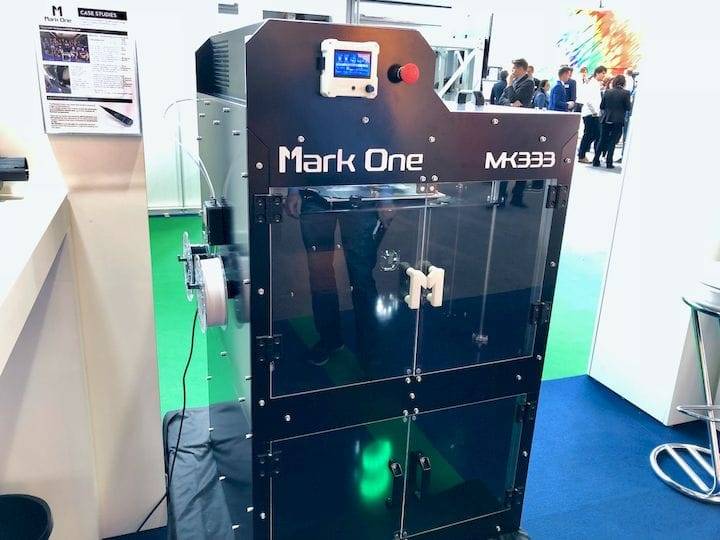[ihc-hide-content ihc_mb_type=”show” ihc_mb_who=”reg” ihc_mb_template=”3″ ]
[vc_row][vc_column][vc_column_text]
There are three models currently available, including:
- The One: an open format device that has a customizable nozzle to enable handling of all the above materials. This device has a build volume of 200 x 200 x 300 mm, and a hot end that can reach 300C.
- The MK333 (shown at top): an enclosed 3D printer with a larger build volume of 300 x 300 x 380 mm, and a minimum layer size of 0.05mm. It has a steel and aluminum frame for rigidity.
- The MK653: an enclosed unit similar to the MK333, but with a much larger build volume of 600 x 500 x 380 mm. Both MK-series machines can heat their build plate up to 120C.
The company also provides significant support to clients, including a pre-sales analysis of needs, customizing the solution for the client’s specific needs, training client staff in machine operations and finally providing ongoing technical support.
To be honest, while their machines are quite capable they are not substantially different from several competitors. However, Mark One does have one extremely interesting approach for carbon fiber production.
I should note that they’ve apparently patented this process. Here’s how it works.[/vc_column_text][vc_single_image image=”5405″ img_size=”full” add_caption=”yes”][vc_column_text]They first print a positive 3D model in a special material. Then once the print is complete, their process allows lamination of standard carbon fiber sheets on top of the print’s surfaces. Once the carbon fiber lamination is complete, the print’s material is dissolved, leaving only the solid carbon fiber laminations.
This is a very interesting approach – especially because it essentially involves 3D printing models with only soluble support material, something I’ve never heard of being done. But with Mark One’s process, there is a clear purpose in doing so.
Of course, this process might not be applicable to any arbitrary shape, but it’s likely many useful applications could indeed be accomplished by using it.
We’re told the company is working on a high-temperature printer that should be able to expand the number of possible materials usable in their systems. Additionally, they say they’re also working on casting of metals, which might use a process not unlike their unusual patented carbon fiber process.
Source: www.fabbaloo.com


